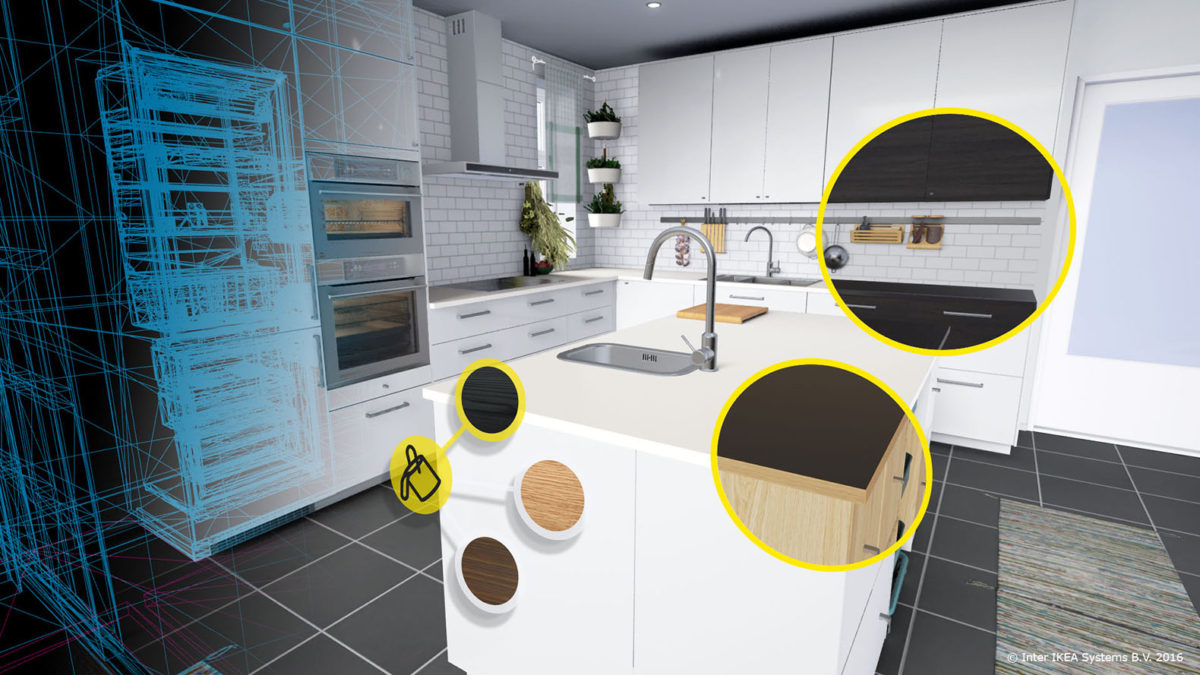This blog will summarize our Digital Transformation Project(DTP) about the opportunities of virtual reality(VR) and augmented reality(AR) within the furniture industry, and more specifically, for the company Lensvelt. Lensvelt sells high-quality furniture, primarily for use in offices and public spaces, but incidentally also sell to individual customers. In this DTP we hope to show that by capitalizing on the current interest in VR and AR, Lensvelt can strengthen its position in the fractured Dutch office furniture market, and increase its profitability.
First some explanation as to what VR and AR are. VR is computer software that generates objects and sensations while letting the user interact with those, in a ‘separate’ space. AR however maintains the user’s connection with the ‘real’ world, and just overlays virtual objects onto real-life objects. Many think this will be the next big thing in technology to disrupt the status-quo, and there is a cross-industry spanning interest in these. Gaming companies were the first to see its potential, and with projects like Oculus Rift by Facebook and SteamVR by Steam, it will have a huge impact on how gaming will be experienced. In the furniture sector, IKEA has been the only one so far realizing the potentials of VR and AR, by starting projects to generate their products in their client’s rooms in either VR or AR.
Lensvelt would be wise to do so as well, and in order implement this smoothly and successfully, we formulated several steps that need to be undertaken. Firstly, a definitive list of requirements for the desired system should be made, and a start should be made with integrating the VR/AR capabilities within the general marketing strategy. Also, a capable IT-company that is capable of fulfilling these wishes should be sought, within the next three months.
After these steps have been completed, a testing version of the VR/AR product should be made, and this version should be tested thoroughly with customers, in order to check whether functions should be added, and whether it functions as supposed. The integration of this product within Lensvelt’s marketing strategy should also be completed, preferably within 9 months. After the testing run, the VR/AR solution should work properly, but Lensvelt should remain in contact with the developer in order to be able to update or add new functions when needed.
We analysed the costs and benefits of such a project, and these warrant the implementation as soon as possible. Even in the worst case, with higher than expected costs and lower than expected sales, the NPV would still be over €150.000. In the case the implementation will progress along more realistic and positive lines, the NPV would be €1.078.760, more than a quarter of Lensvelts annual revenue. We therefore advise the CEO of Lensvelt to start the implementation of this project, as it proves to be positive from both a financial and strategic point of view.
Check out our video here: https://youtu.be/ZuAx5Aw3cy0
Group 65
Lukas Braunschweig 381788
Karim El Mouttaki 384419
Ruben Roel 376930
Gabriela Tomova 382847

